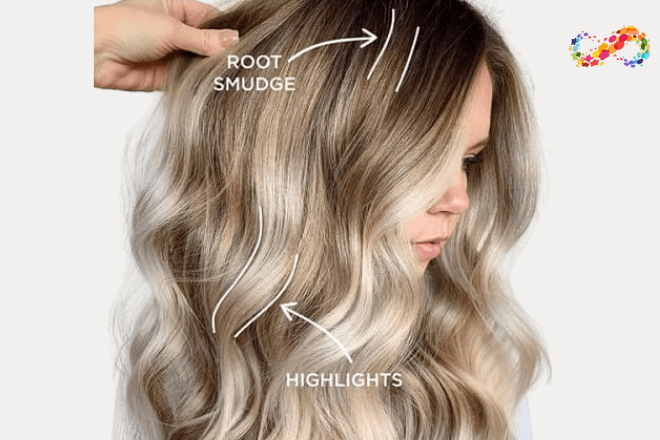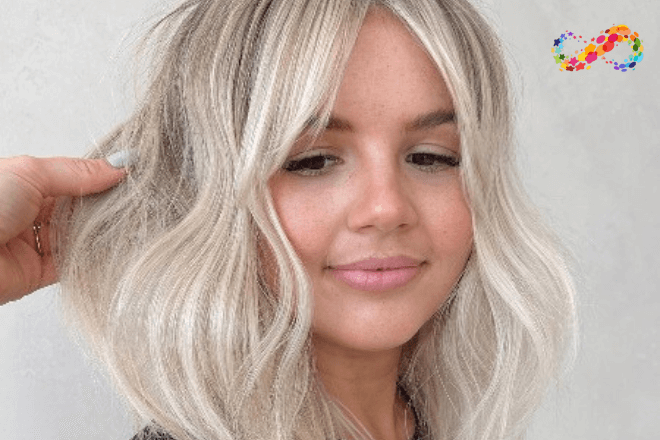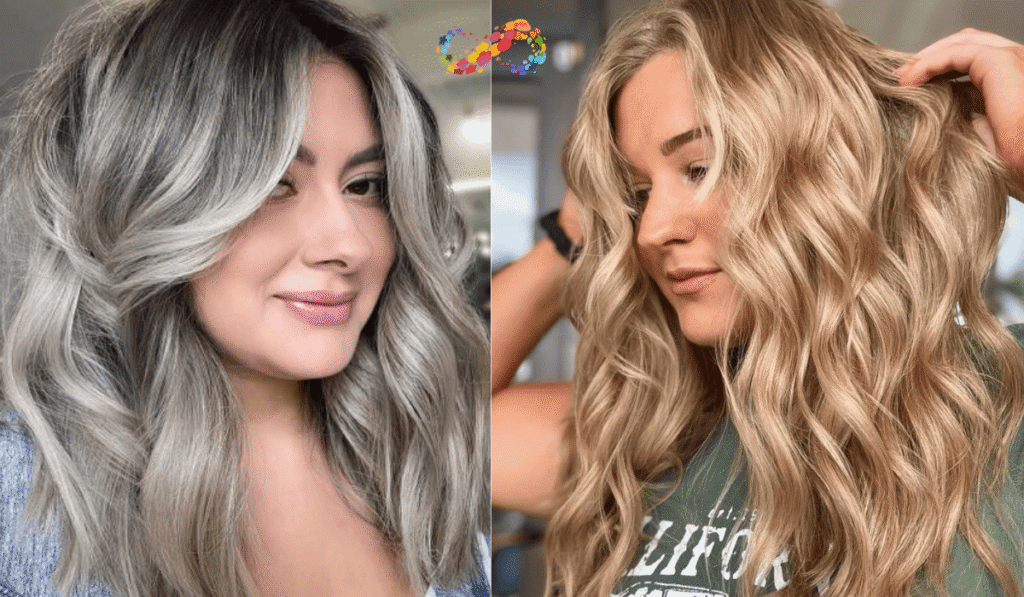Discovering the Beauty of Modern Hair Coloring
Have you ever sat in a salon chair, hearing terms like root smudge, root tap, root shadow, or root melt, and wondered what they all mean? These are the clever tricks stylists use to make your balayage or blonde highlights feel lived-in and seamless, like they’ve grown out perfectly on their own. In today’s hair world, it’s all about that natural blend—no harsh lines, just soft transitions that suit your lifestyle. This guide breaks it down simply, helping you understand each technique, their differences, and which one might be your perfect match for a fresh, flattering look.
What Exactly Is a Root Smudge?

A root smudge is like gently blurring the line where your natural roots meet your lighter highlights. Your stylist applies a darker demi-permanent or semi-permanent color right at the scalp, then softly blends it down into the mid-lengths using a brush or even their fingers. The result? A smudged roots hair style that’s natural, softened, and super forgiving as it grows out.
It’s a lifesaver for fixing harsh or ugly highlights, smoothing away those stark foil lines into something that looks sun-kissed and real. Favorites like root smudge blonde balayage or smudge root balayage shine here, giving that beachy, effortless vibe where the color fades beautifully without needing constant touch-ups.
Understanding the Root Tap Technique

Now, let’s talk about the root tap—it’s like giving your roots a quick, polished nudge after highlighting, often with foils. The stylist lightly “taps” a demi-permanent color onto just the root area, refining the transition without overwhelming your natural shade. This keeps everything clean and bright, maintaining that fresh-from-the-salon glow.
A root tap blonde look stands out for its vibrancy and contrast, unlike a no root tap where lines can feel too sharp. Compared to a root smudge, it’s more about precision and shine rather than a diffused blur, making it ideal for blondes who want to keep their color popping.
Root Tap vs. Root Smudge: Breaking Down the Differences
Deciding between a root tap and a root smudge feels like choosing between a sunny day and a cozy fog—both beautiful, but in their own ways. Here’s a side-by-side look to make it clearer:
| Aspect | Root Tap | Root Smudge |
|---|---|---|
| Placement | Stays right at the scalp for a defined start | Drifts deeper into strands for a gradual blend |
| Overall Vibe | Crisp, bright, and high-contrast | Soft, blurred, and naturally diffused |
| Maintenance | Needs more frequent visits to keep it sharp | Low upkeep, hides regrowth beautifully |
| Best For | Vibrant blondes craving structure | Effortless, lived-in looks like balayage |
In the end, root tap vs root smudge comes down to what you love: bold brightness with a tap or soft ease with a smudge. Chat with your stylist about your daily routine to pick the winner.
Root Shadow vs. Root Smudge: Choosing Between Depth and Softness
A root shadow color brings a bit of edge, layering a darker tone at the roots to build depth and contrast. It’s more dramatic than a root smudge, which is all about gentle softening for a subtle shift. With a root shadow, your hair gains that moody, dimensional feel that turns heads.
The debate of smudge root vs shadow root is about your mood—if you’re after a seamless, easy blend, smudge wins. But for bold depth that adds intrigue to your balayage or highlights, shadow is the star. Your stylist can help decide based on whether you want diffusion or drama.
Root Melt vs. Root Smudge: Subtle Blend or Bold Gradient?
Enter the root melt, the technique that creates a dreamy, extended fade from dark roots to light ends, stretching the color transition way down the strands. Unlike the root smudge’s short, soft blend near the scalp, a root melt builds more dimension for a flowing, sun-faded effect that’s pure magic in balayage.
When stacking root tap vs root melt, the tap keeps roots bright and tidy, while the melt focuses on that long, seamless flow. For root smudge vs root melt, it’s subtlety versus extension—a smudge is contained and gentle, but a melt amps up the drama with its broader gradient.
Finding the Perfect Technique for Your Hair
Not sure where to start? Here’s when each shines:
- Root smudge hair: Great for toning down blonde highlights, blending away foil edges, or making root smudge blonde balayage feel low-maintenance and natural.
- Root tap hair: Spot-on for post-foil freshness, keeping roots neat and your root tap blonde lively and bright.
- Root shadow: Ideal for adding depth and a cooler, moodier tone to create contrast in your style.
- Root melt: Your pick for a striking, lived-in balayage with a long, dimensional shift from dark to light.
Stylists customize things like a root smudge formula to fit your hair’s tones and what you’re aiming for, so it’s all about personalization.
See More Skinpres T – The Gentle Approach to Skin Recovery and Balance
Questions Answered
Got questions? Here are the most common ones about these techniques, answered simply:
Q: What’s the main difference between root tap and root smudge?
A root tap is precise and bright, focusing on the scalp for a clean look, while a root smudge blends deeper for a soft, natural fade.
Q: Is root smudge good for blonde balayage?
Absolutely—root smudge blonde balayage creates that effortless, sun-kissed grow-out without harsh lines.
Q: How does root shadow differ from root smudge?
Root shadow adds bold depth and contrast, whereas root smudge softens for a more subtle, diffused effect.
Q: When should I choose a root melt over a root smudge?
Go for root melt if you want a longer, dimensional gradient; root smudge is better for a shorter, gentler blend.
Q: Can root tap fix harsh highlights?
Yes, it polishes roots after foils, but for fully softening harsh or ugly highlights, a root smudge might be even better.
Q: What’s a smudged roots hair look like?
It’s blurred and natural, like your color has softly grown out, perfect for low-maintenance styles.
Q: Is root tap blonde higher maintenance?
It can be, as its crisp vibe might need touch-ups to stay vibrant, unlike the forgiving root smudge.
Q: How do stylists create a smudge root balayage?
They apply darker color at the roots and blend it down, enhancing the balayage’s seamless, lived-in feel.
Q: Root shadow vs root melt: Which is more dramatic?
Root melt often feels more striking with its extended fade, while root shadow focuses on root-depth contrast.
Q: Can these techniques work on any hair type?
Yes, they’re versatile—your stylist adjusts the root smudge formula or others to match your hair’s texture and tones.
Your Path to Effortless Hair
At the end of the day, whether it’s the gentle haze of a smudged roots blonde, the sharp gleam of a root tap blonde, the intriguing layers of a root shadow, or the sweeping flow of a root melt balayage, these methods are all about making your hair feel authentically you. They’re the tools that turn everyday color into something elegant and easy. Share your goals with your stylist—softness, brightness, or depth—and watch them craft a look that’s as unique as your story.


Pingback: Best French Makeup Brands: Parisian Beauty Secrets
Pingback: Hair Extensions Length Guide: Find the Perfect Inches for
Pingback: How to Refresh Hair Without Washing